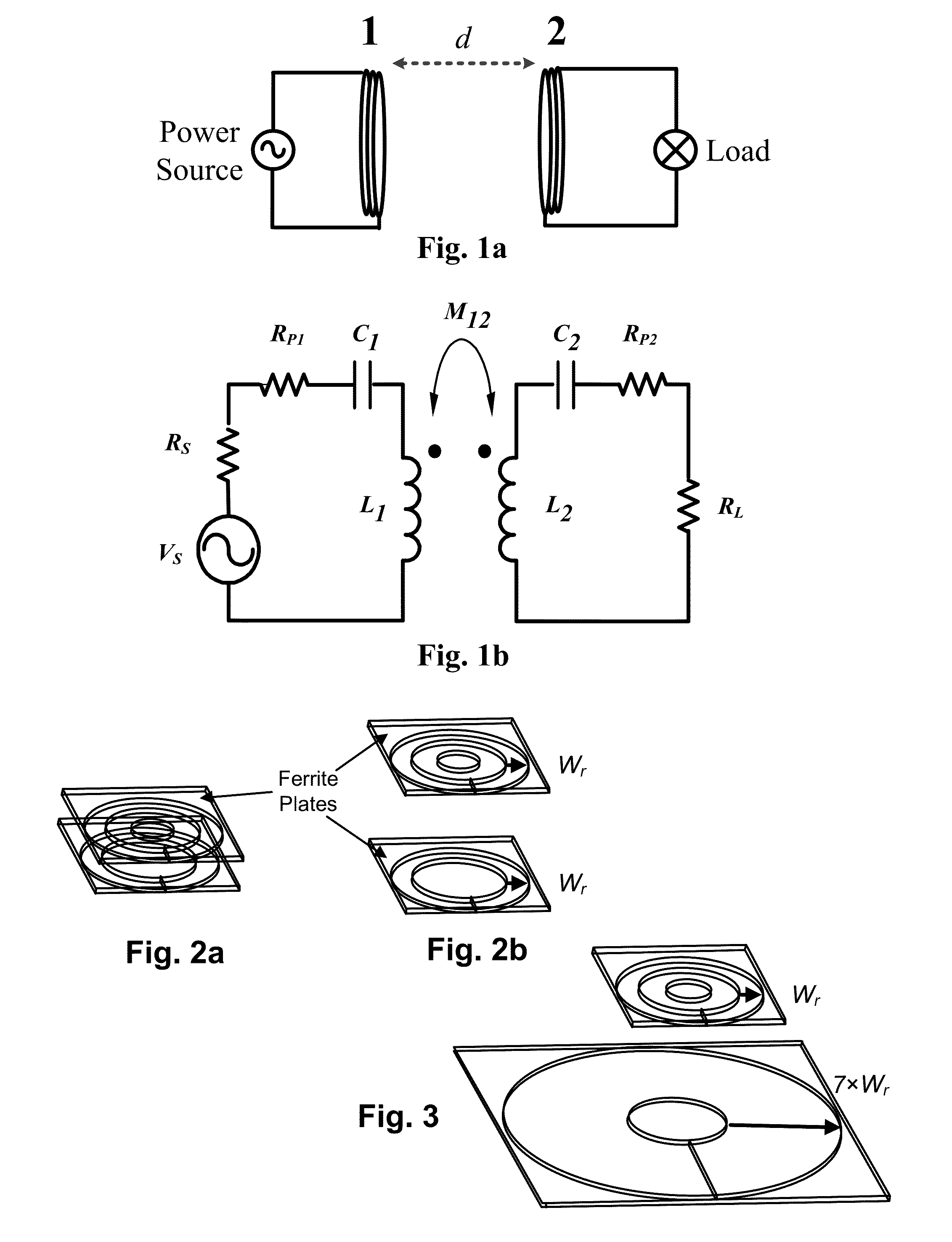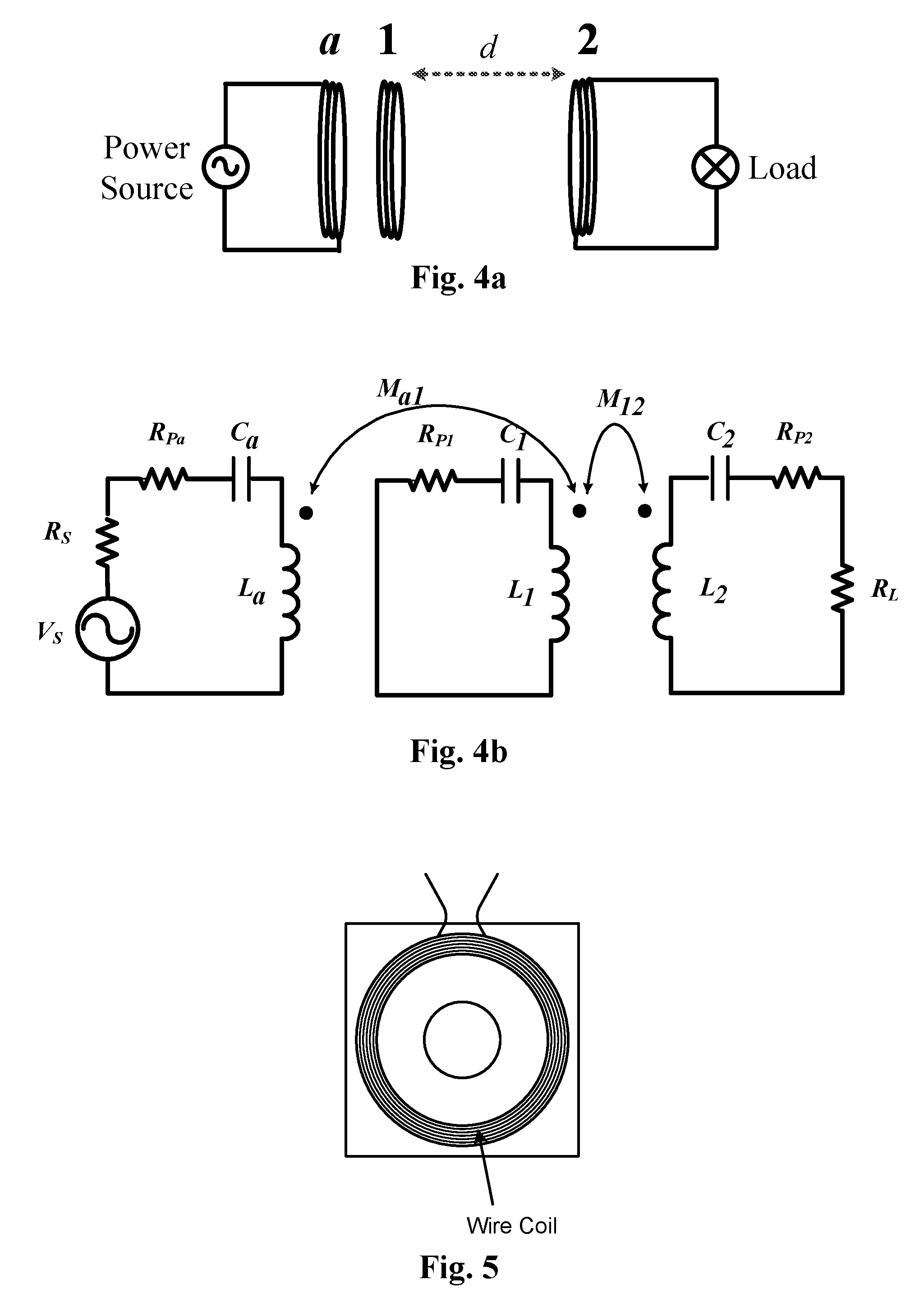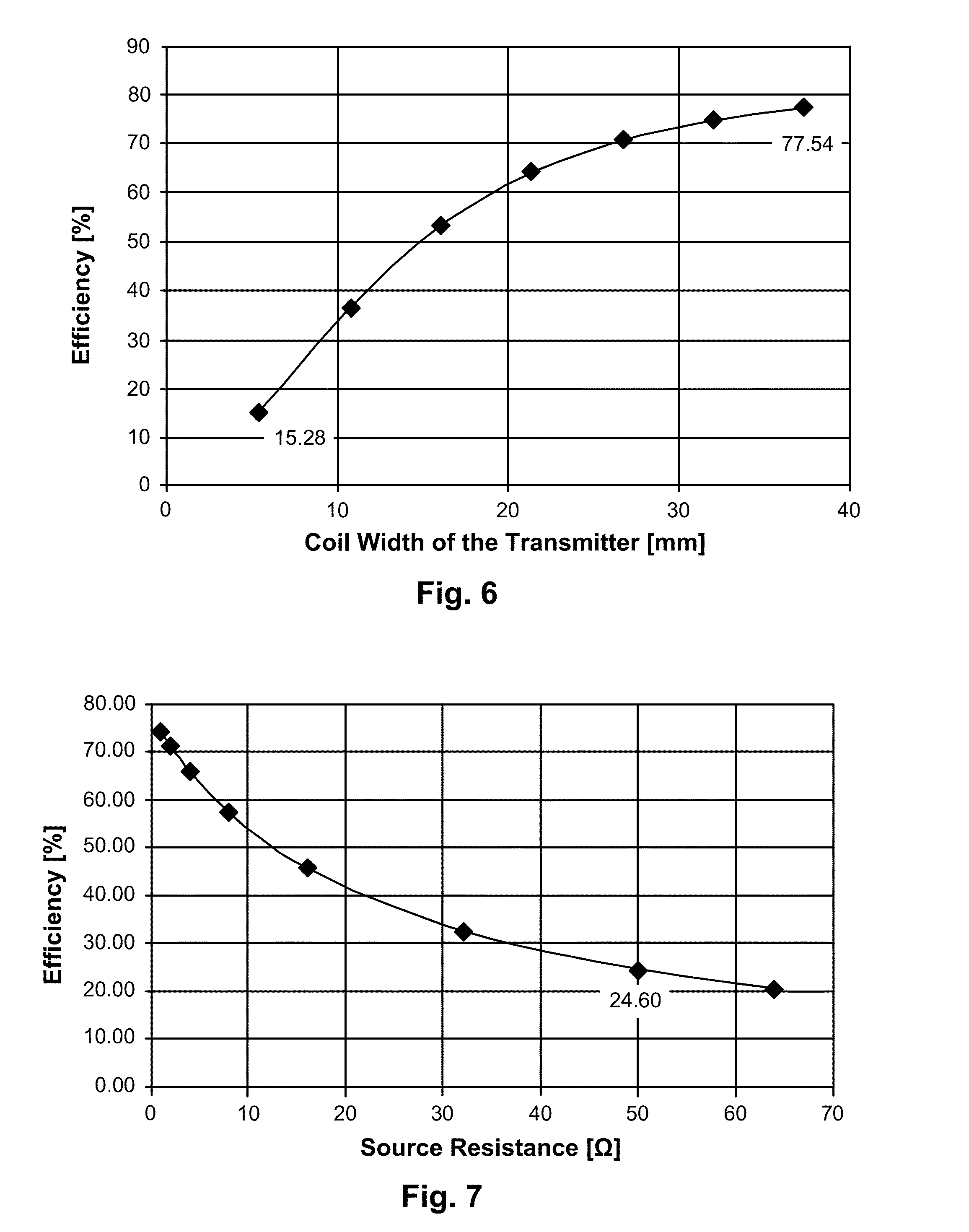Inductive power transfer using a relay coil
a relay coil and power transfer technology, applied in the field of inductive power transfer, can solve the problems of reducing the efficiency of conventional 2-coil systems, and reducing the so as to improve the overall system energy efficiency, reduce current stress and component current ratings, and increase transmission distances
- Summary
- Abstract
- Description
- Claims
- Application Information
AI Technical Summary
Benefits of technology
Problems solved by technology
Method used
Image
Examples
examples
[0060]The specified operating conditions defined by equation (11) can be implemented in a 3-coil system: namely the driver coil (coil-a), the relay coil-resonator (coil-1) and the receiver coil (coil-2). The relay coil-resonator (coil-1) can be placed between the driver coil-a and the receiver coil-2. If preferred, the relay coil-resonator can also be placed on the same plane as the driver coil-a. The latter co-planar arrangement is now used to illustrate some examples.
[0061]Conventional 2-Coil Wireless Power System.
[0062]In this example, the transmission distance is set at 30 mm which is much larger than the 5 mm in a typical wireless charging pad specified in the Qi standard version 1.1. As shown in FIG. 3, Wr is used to represent the coil width of the receiver coil. This coil width is defined as the difference of the outer diameter of the coil and the inner hollow radius of the coil. In this example, the transmitter coil is assumed to have the same inner hollow radius as that of ...
PUM
 Login to View More
Login to View More Abstract
Description
Claims
Application Information
 Login to View More
Login to View More - R&D
- Intellectual Property
- Life Sciences
- Materials
- Tech Scout
- Unparalleled Data Quality
- Higher Quality Content
- 60% Fewer Hallucinations
Browse by: Latest US Patents, China's latest patents, Technical Efficacy Thesaurus, Application Domain, Technology Topic, Popular Technical Reports.
© 2025 PatSnap. All rights reserved.Legal|Privacy policy|Modern Slavery Act Transparency Statement|Sitemap|About US| Contact US: help@patsnap.com



